Broadleaf Plantain / Spring / Summer / Autumn / Edible
Scientific Name
Plantago major
Family
Plantaginaceae
Also known as
White man’s footprint
Habitat
Found in Europe, including Britain, from Iceland south and east to Spain, northern and central Asia. Grassland, roadsides etc, a common weed of lawns and cultivated ground, on neutral and basic soils. it grows as introduced weed across most of the world, and particularly thrives on compacted soil where it’s often trampled – hence the Native American name of white-mans footprint.
Description
The plant is a rosette-forming perennial herb, with leafless, silky, hairy flower stems.
Identifying Features
Leaves
The basal leaves are oval, smooth edged and 5-20cm long by 4-9cm wide. They grow in a rosette, sometimes upright but often flat on the ground especially on trampled or mown areas. Each leaf has strong parallel veins narrowed to short petiole.
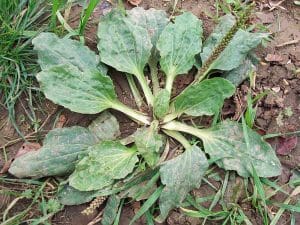
Flowers & Seeds
the flower stem grows upright, 5-15cm long and narrow and clustered densely with small flowers,typically 1mm across. They are greenish brown with purple stamens, quickly swelling to form green seeds
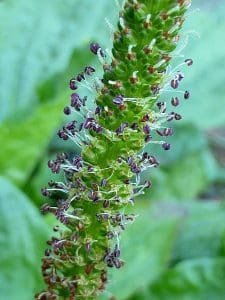
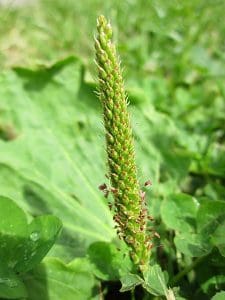
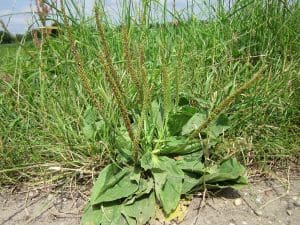
Uses
Food
Young leaves – raw or cooked. They are rather bitter and very tedious to prepare, the fibrous strands are best removed prior to eating. The very young leaves are somewhat better and are less fibrous.
Seed – cooked. Used like sago. The seed can be ground into a powder and added to flours when making bread, cakes or whatever.
Medicine
Broadleaf plantain is very nutritious, containing high levels of calcium, and 100g of plantain contains approximately the same amount of beta-carotene as a small carrot.
The leaf has antiseptic and antihistamine properties, leaves contain mucilage, tannin and silic acid. An extract of them has antibacterial properties. They are used externally in treating skin inflammations, malignant ulcers, cuts, stings etc. The heated leaves are used as a wet dressing for wounds, swellings etc and to stop bleeding. The root was used for fever and respiratory problems.
Known Hazards
None known.
Harvesting
Leaves come up from March, but can be hard to spot when so young. Flower from Apr to August. Seeds ripen from Jun to September.
Potential lookalikes
Other members of the Plantain family, such as Greater, or Ribwort Plantain, but they are all edible and have similar uses



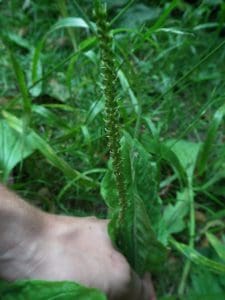
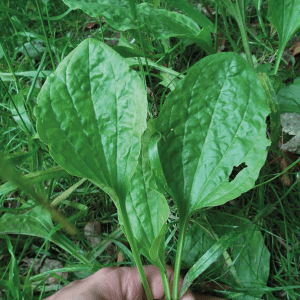



1 reply on “Broad Leaved Plantain (Plantago major) Identification”